The sad fate of the chieftains. The defeat of the uprising Kondraty Bulavin
Article "Whom" Kondraty grabbed " It was told about the chieftain Bulavin and the beginning of a new Peasant War. From this article we remember that at that moment the Donskoy Army area was surrounded on all sides by the lands of the Russian state, from where from three sides they were ready to march on the rebel government troops.
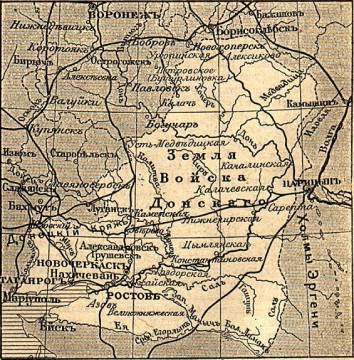
Land of the Don Army
Trying to prevent the tsarist army from entering the Don lands, the leader of the rebels made a mistake: he divided his forces into three parts.
Atamans Semyon Drany, Nikita Naked and Bespaly along the Seversky Donets went to meet the army of Prince Vasily Dolgoruky.
The detachments of Ignat Nekrasov, Ivan Pavlov and Lukyan Khokhlach headed east to cover the Don from the corps of Peter Khovansky Menshiy and his Kalmyk allies.
Kondraty Bulavin himself hoped to capture Azov.
In addition, the envoys of Bulavin rebelled the Borisoglebsky, Kozlovsky and Tambov districts, peasant unrest near Voronezh, Kharkov, Orel, Kursk, Saratov was noted. So, on September 8, 1708, after the death of Bulavin himself, in the Tambov district on the Small Alabug river, local peasants, 1300 "thieves' Cossacks" and 1200 "Cossacks from the pier" entered the fray with the tsar’s troops.
There were even performances far from the Don Nizhny Novgorod, Kostroma, Yaroslavl, Tver, Vladimir, Moscow and Kaluga counties, but it is difficult to say how far the peasant riots were associated precisely with the agitation of the Bulavins.
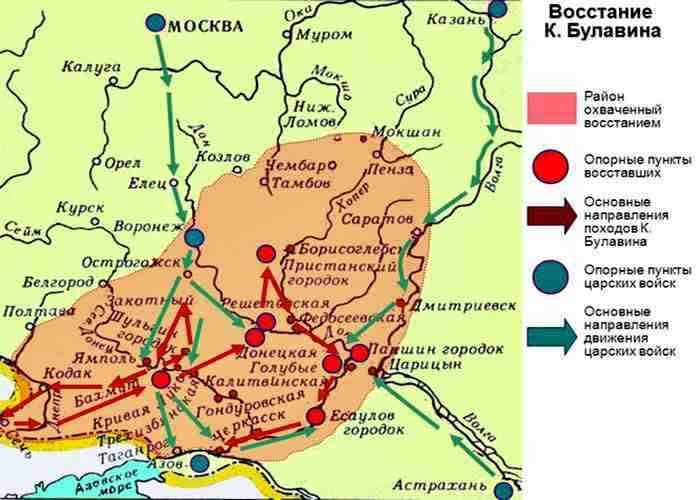
Lands in Rebellion by Kondratius Bulavin
The beginning of hostilities
Seversky "front" was headed by Simon Drany, whose army was about five and a half thousand Donetsk Cossacks and a thousand Cossacks. With these forces, on June 8, 1708, near the Urazova River (near the city of Valuyki) he completely defeated the Sloboda Sumy Cossack Regiment (his commander A. Kondratyev also died in battle). A regimental convoy, 4 cannons, hundreds of horses and guns was captured. After this, Simon Drany besieged the city of Tor, but he could not take it before the approach of the main forces of Prince Dolgorukov. Near the tract of Krivaya Luka, the army of this chieftain was defeated in a fierce, lasting all day, battle with superior forces of government forces. Semyon Drany fought in the most dangerous directions and personally led the Cossacks into cavalry attacks, but was killed not by a saber, but by a cannonball. For the rebels, his death was an irreparable loss: the military authority of this chieftain was undeniable, and after his death in Cherkassk they said that "all hope was on Drany." Having lost about one and a half thousand people, the rebels, now led by Nikita the Naked, retreated. The Bakhmut town, the chieftain of which was formerly Bulavin, was destroyed by order of Dolgorukov in such a way that “there was no stone on the stone”.
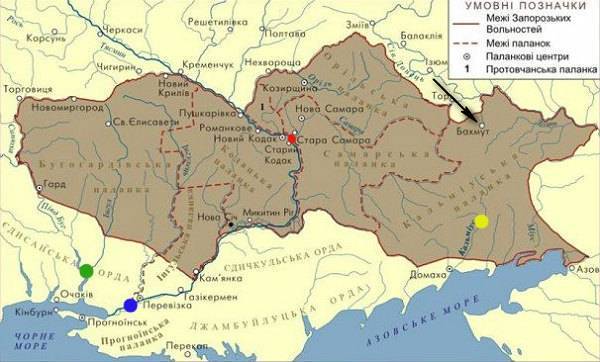
Liberties Troops of Zaporizhzhya, XVIII century. Above is Hetmanism and Slobozhanschina, below is the Crimean Yurt, to the left is the Ottoman Empire
Ignat Nekrasov, another famous ataman of the rebels, eloquently speaks about the character of the folk tradition that he had 4 rows of teeth: do not put such a finger in your mouth - you will bite off your hand!
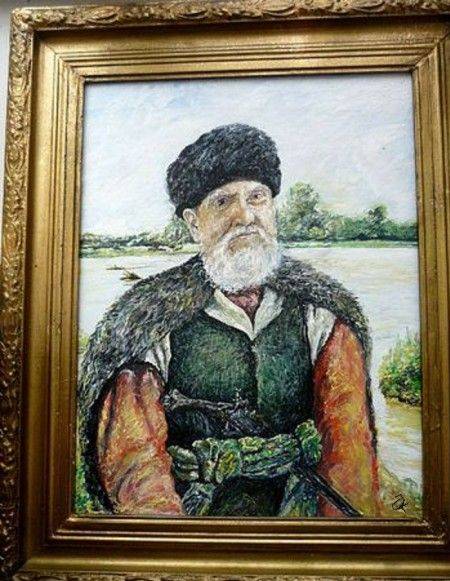
Kiselev D. “Ignat Nekrasov”
This predatory "toothy" chose a different tactic: instead of field battles, he delivered sudden blows with large forces of the cavalry - and, if necessary, quickly retreated, not giving the tsarist troops the opportunity to start a "right battle". Joining the new detachments of the Cossacks, Nekrasov reached the Pristan Town on Khopr, from where he turned to the Volga. On May 13, 1708, he, along with Ivan Pavlov, captured Dmitrievsk (Kamyshin), and tried to seize Saratov. Unable to take this city, he broke through to Tsaritsyn. Having learned that Berner’s regiment was coming up from the Astrakhan, Nekrasov defeated him, attacking from two sides: the cavalry hit from the front, the foot “plastuns” from the rear. On June 7, after several days of siege, Tsaritsyn was also captured (during the fire, the archive of this city burned down). Voivode A. Turchaninov and the clerk who was with him were taken prisoner and beheaded.
After this, Nekrasov decided to return to the Don and led his troops to the village of Golubinskaya. The detachment of ataman Pavlov remaining in Tsaritsyn was defeated by government troops approaching the city on July 20, 1708. Many of his captured Cossacks were hanged along the Don Road. The survivors connected with the detachment of Nekrasov.
Bulavin himself, along with Colonels Khokhlach and Gaykin, at the head of a detachment of 2 thousand people, approached Azov.
The assault attempt was extremely unsuccessful, at the cost of heavy losses they managed to take only the suburbs, 423 Cossacks died in battle. The retreat was difficult and unsuccessful: pursued by the tsarist troops, about 500 Cossacks drowned in the Don and in the Kalancha River. 60 people were captured - their fate was terrible: at first their nostrils and tongues were pulled out, and then they were hanged by the legs on the fortress walls.
The death of Kondraty Bulavin
The news of the death of the ataman Drany and the defeat of Bulavin at Azov undermined the morale of the rebels. On July 7 (18), 1708, the Cossacks of the “pro-Moscow party” seized guns in Cherkassk and closed the gates in front of detachments retreating from Azov. Bulavin himself (who had arrived in Cherkassk earlier) and the three Cossacks who remained loyal to him were surrounded in the Ataman kuren. The Azov governor I.A. Tolstoy later reported to Moscow about the death of the rebel leader:
Having barricaded themselves, Bulavin and his associates killed six people during their last battle.
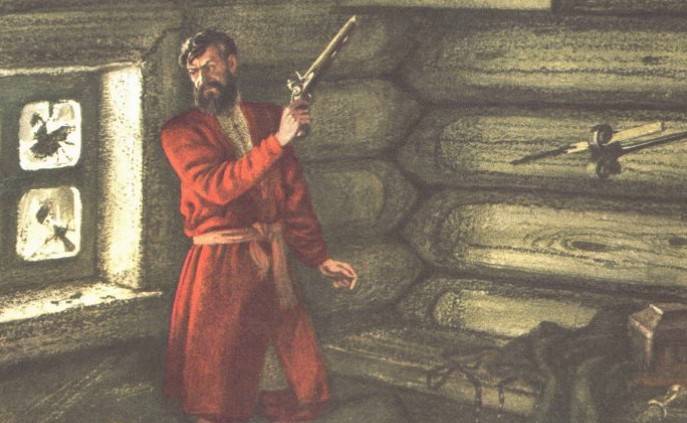
In the end, one of the cores broke through the wall of the building, the besiegers burst inside, and Yesaul Sergey Ananyin shot the ataman of the rebels with a pistol. According to another version, Ananyin was among the defenders of Kuren and killed the chieftain, hoping to receive forgiveness.
The circumstances of Bulavin’s murder are mysterious: the fact is that the shell-shocked ataman was shot at point-blank range - at the temple. Why did the conspirators not want to take him alive? For the Moscow authorities, the living leader of the rebels was a much more valuable “gift” than his corpse: he could be questioned “with partiality” and brutally executed on the frontal place - to intimidate his subjects, so that it would be disgraceful for others to rebel. Apparently, Bulavin had something to say about them in Moscow - at the investigation. And maybe in Cherkassk there were many supporters of this chieftain at that time, and the conspirators were afraid that they would release Bulavin, and that they themselves would be hanged or "put into water."
The corpse of the rebel chieftain was taken to Azov, where the garrison doctor cut off and alcoholized his head to send to Peter I, while the body was hanged by one leg on the city wall. Then the corpse was cut into 5 parts, which were planted on poles and carried around the city. Bulavin’s head was kept in alcohol for 9 months. Finally, Peter I personally brought her to Cherkassk and ordered her to be planted on a stake.
Almost immediately, a legend appeared that the chieftain shot himself in order not to fall into the hands of enemies, and his wife stabbed herself with a dagger.
Others said that together with Bulavin she shot back to the end and it was not his wife who died, but the elder daughter of the chieftain - Galina.
This legend became the plot of G. Kurochkin’s painting “The Death of Kondraty Bulavin” (1950):
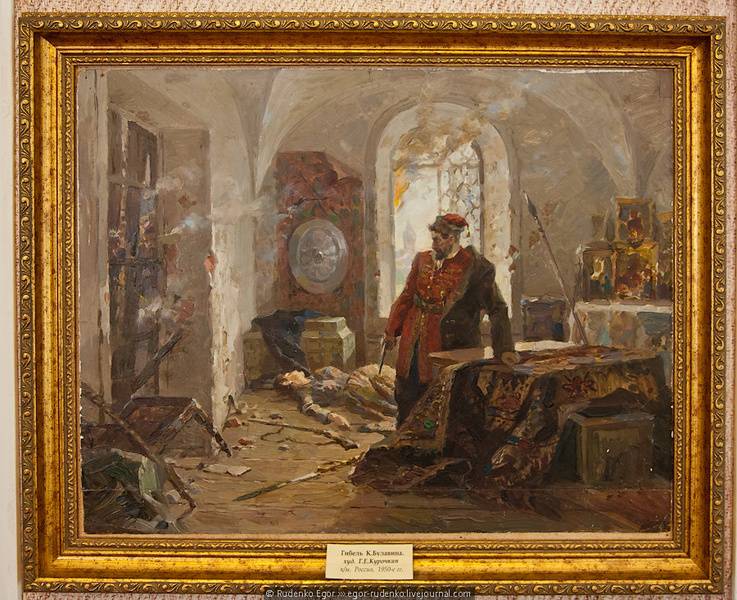
We know the name of the person who became the author of the version of Bulavin's suicide - foreman Ilya Zershchikov, who sent a report about the assault on smoking to the Azov governor Tolstoy.
Some believe that in this way they tried to discredit the leader of the rebels - since Christianity recognizes suicide as a sin. But Zershchikov was unlikely to think about such high matters then. Most likely, he wanted to absolve himself and his accomplices of blame for the murder of the chieftain - this crime, according to Cossack laws, was punishable by death. Having learned about Bulavin’s murder, Ignat Nekrasov sent a letter to Cherkassk in which, referring to this law, he threatened to “carry out a search” and kill all those responsible for his death:
The report of Zershchikov also misled the English ambassador Charles Whitworth, who had already reported from Moscow on July 21 (August 1) in 1708 (commendable promptness!):
Peter I found the news of Bulavin’s death in Mogilev, and the tsar joyfully ordered “to shoot” from guns and rifles.
On July 27, 1708, Dolgoruky’s army entered Cherkassk, 40 Cossacks suspected of sympathizing with Bulavin were hanged, Cossack foremen from the entire Don Cossack Army took the oath of allegiance to the Russian state, but this did not save anyone from repression.
Ignat Nekrasov: the path to the Kuban
Upon learning of the death of Bulavin, Nekrasov led his troops to Cherkassk. He did not have the strength to free the Don capital on his own. He hoped to meet with the remnants of the army of Semyon Dranogo, which was now led by ataman Nikita Galy. But they failed to join forces. Nekrasov was late to the city of Esaulov, who, according to Dolgoruky, was "strong and green, all around there was great water; only on one side is the dry path, and that one is cramped. ” The besieged rebels fought only a day, surrendering to the second, and taking the oath of allegiance to the king on the third. If they hoped in this way to appease Dolgorukov, they miscalculated. The prince later reported to Peter I that he had ordered the local chieftain and two “schismatic elders” to be quartered, another 200 Cossacks were hanged and rafts with gallows were launched down the Don.
The army of P. I. Khovansky coming from the Volga attacked a large detachment of rebels (4 thousand people “except for wives and children) near Panshin. The prince wrote to Peter I about this battle:
Despite fierce resistance, the rebels were “beaten, and they drowned others,” taking six banners, two badges, eight guns on the battlefield, and the Kalmyks “took over their wives and children, a considerable number of belongings.”
After this, Khovansky took and burned eight Don towns, thirty-nine others surrendered to him without a fight.
Now Khovansky was approaching the Cossacks of Nekrasov (about two thousand people with wives and children) from the north, and Dolgorukov from the south. Upon learning of the fall of Esaulov and the defeat of the rebels at Panshin, the ataman ordered the convoy to be abandoned and, crossing the Don at Lower Chir, led his detachment to the Kuban. Atamans Pavlov and Bespaly left with him. Later ataman Senka Selivanov “nicknamed Raven”, brought to him the Cossacks of the Nizhnechirskaya, Esaulovskaya and Kobylyansk villages along with their families.
The last battles of Nikita Naked
Nikita Naked, with whom there were about two and a half thousand people, was with Aydar. Pursued by government forces and the Cherkasy “ship and horse” army, sent by the elders there to Dolgorukov at the request of the prince, he went to the Donetsk town, whose Cossacks, after some hesitation, nevertheless joined him. The von Deldin and Tevyashov regiments chasing him retreated, not daring to enter the battle. Then the caravan of Colonel Bils (1500 soldiers and 1200 working people) was attacked and defeated by the rebels, who brought bread and 8 thousand rubles to Azov from the Proviant's order. It happened on September 27, 1708.
Meanwhile, Dolgorukov, having learned from prisoners that the Naked leader of the four-thousandth detachment had gone down the Don to the Ust-Khopersky town, attacked the rebels remaining in the Donetsk town (there were about a thousand people):
- the prince informed the king.
The last battle Nikita Naked gave at the Reshetovskaya village near the Donetsk town. At that time, some of the working people of the Bils caravan joined him, Cossacks from Aidar approached, atamans Prokofiy Ostafyev from the Kachalinskaya stanitsa and Zot Zubov from the Fedoseyevskaya stanitsa led their detachments. In total, under the supervision of the Naked, there were about seven and a half thousand people. According to Dolgorukov, the rebels lost over 3000 people killed in that battle, many drowned while crossing the Don, and Naked himself fled with only three Cossacks. Dolgorukov’s trophies were 16 rebel bunchuk and two guns. In addition, 300 officers and soldiers from the Bils regiment were released and four banners were recaptured. In November 1708, Nikita Naked was captured and executed.
The tragedy of the Cossack Don
Further actions of Dolgorukov on the Don can be safely called genocide. The prince himself reported to Peter:
Destroyed Cossack towns and villages, this titled punisher does not even consider:
A. Shirokorad described the pogrom of cities and villages of the Don Army:
Peter I highly appreciated such zeal Dolgorukov, granted him the Starkovsky volost in Mozhaisk district, which brings about one and a half thousand rubles of annual income.
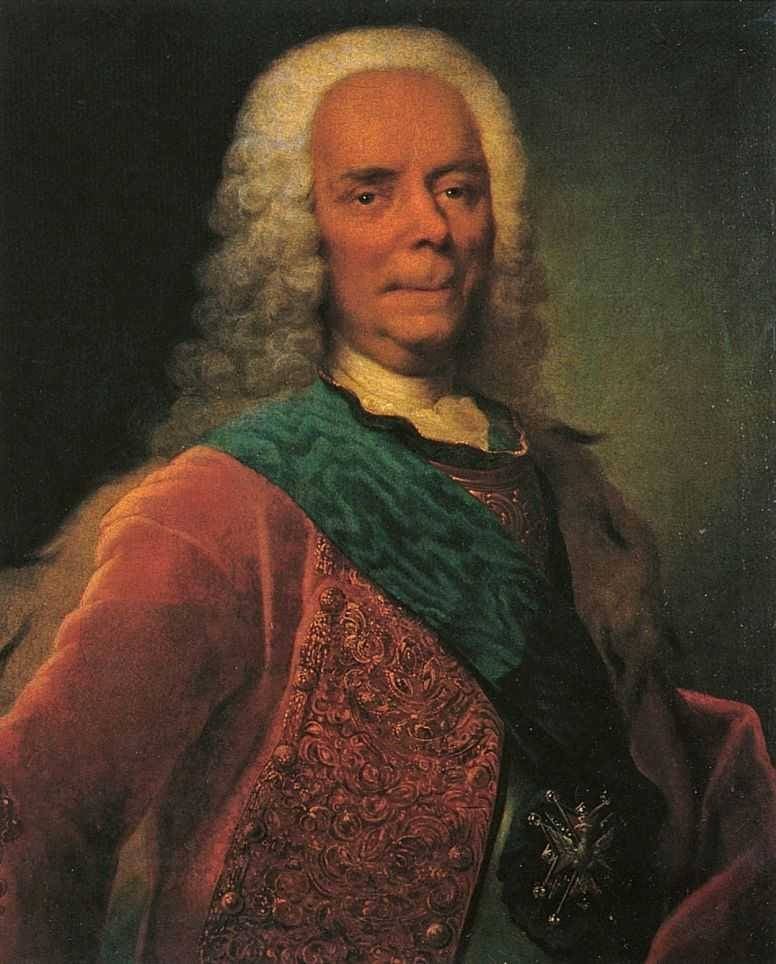
So we see Vasily Vladimirovich Dolgorukov in the portrait of George-Christopher Groot, stored in the State Tretyakov Gallery. He lived to be 75 years old, was twice arrested and deprived of all ranks and titles - in the case of Tsarevich Alexei Petrovich in 1718 and for the “censure" of Anna Ioannovna in 1731. Empress Elizabeth returned him to court, reinstating him in the rank of field marshal and appointing him president of the Military College . He is the hero of V. Pikul’s novel “The Word and the Deed,” which put the following words into his mouth: “I don’t like Peter, he called the German to Russia. And he wanted to teach me. And I wasn’t a fool already ... From Peter I climbed paper longing into Russia: wherever you go, everywhere they write a piece of paper about you "
The fate of the Cossacks Ignat Nekrasov
At the beginning of 1709, the chieftains Nekrasov, Pavlov, and Bespaly took several thousand Cossacks (including women and children) to the right bank of the Laba (a tributary of the Kuban), which at that time was controlled by the Crimean khans. Here they met with Old Believers who fled from persecution for their faith in the 1690s. As he wrote in "Stories or the story of the Don Cossacks ”(1846) Major General A.I. Rigelman, the fugitives "multiplied themselves as Cossacks, as thieves (rebels) as they were."
Formerly quite loyal to the Moscow authorities, but thrown out of Russia by the power of official cruelty, greed and stupidity, these groups of Cossacks, united, formed a new army subordinate to the Crimean Khan, and received the name "Nekrasovites" ("Ignat Cossacks"). Crimean khans often used them to suppress internal unrest among the Tatars themselves.
Quite quickly, they moved from the Kuban to the Taman Peninsula, where they founded the towns of Bludilovsky, Golubinsky and Chiryansky.
While Ignat Nekrasov was alive, the attitude of these people towards Russia and the Cossacks remaining on the Don was quite hostile, in the future, with the advent of new generations, the degree of hatred decreased significantly, and subsequently pro-Russian sentiments even began to spread among them. But in the first half of the XVIII century, this was still far away.
In May 1710, Nekrasov came to the Berda River with a three thousandth army of Cossacks, Kalmyks and Kuban Tatars. From there, he sent 50 Cossacks "to Little Russian cities for indignation and seduction among the people, so that they would go to him, Nekrasov."
In 1711, during the Russo-Turkish War, the Nekrasovites went camping together with the Tatars.
In 1713, they took part in the raid of Khan Batyr-Girey to the Kharkov province, in 1717 - to the Volga, Khoper and Medveditsa.
Nekrasovtsy conducted active propaganda, "beckoning" the Cossack Cossacks from the Don. The Old Believers of different Russian provinces fled to them and ran. As a result, since 1720, the agents of the Nekrasovites and those who harbor them were “instructed” to “execute without mercy”.
In 1727, according to the testimony of a fugitive soldier Serago, many Cossacks of the upper cities and villages were going to flee to the Nekrasovites, dissatisfied with the census and the introduction of passports.
In 1736, the Don Cossacks and Kalmyks burned three Nekrasov villages. Those, in turn, in 1737, together with the Tatars and Circassians ravaged and burned the Kumshatsky town on the Don. The Don and Kalmyks responded by burning the city of Khan-Tyube and stealing cattle belonging to the Nekrasovites.
Ignat Nekrasov died in 1737 and in the songs and traditions of his followers he soon turned into the main leader of the rebels - Bulavin and Drany began to be perceived as his assistants.
Nekrasov left about 170 “Testaments” (or “Commandments”) to his followers.
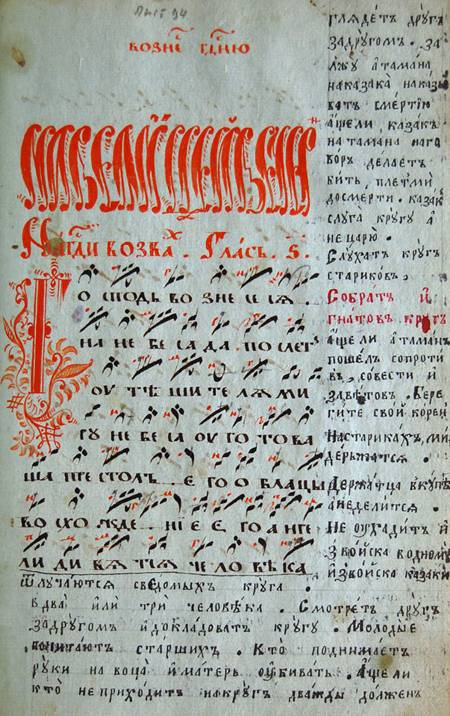
Code of Covenants of Ignat
Of these, 47 were reliably preserved, and the first was the following:
Therefore, the Nekrasovites rejected the invitation of Anna Ioannovna and refused to return to the lands controlled by the Russian government. The insulted tsarina ordered the military chieftain Frolov to ruin their villages, which he did for two years.
In 1762 they ignored the invitation of Catherine II, in 1769 they did not respond to the letter of General de Medem, who suggested that they move to the Terek.
But then they themselves began to turn to Petersburg with requests for permission to return to the Don - in 1772 and 1775. They rejected the authorities' offer to provide land on the Volga. In 1778 A.V. Suvorov tried to become an intermediary between them and Petersburg, but did not achieve success.
The first small groups of Nekrasovites began to move to the territory of the Ottoman Empire (in Dobrudja, on the mouth of the Danube and on the island of Razelm) back in the 40s and 60s of the 1780th century. The remaining, after Taman was occupied by Russian troops, retreated to the left bank of the Kuban. In XNUMX, they finally accepted Turkish citizenship and were relocated to the territory of the Ottoman Empire, eventually forming two independent colonies - the Danube and Mainos (near Lake Mainos), which the Turks called Biv-Evle ("A Village of a Thousand Houses"). Then the Cossacks moved to the Mainos colony, which the Turks originally settled near the city of Enos (coast of the Aegean Sea). It was the Maynos who preserved almost all of the “Commandments” of Ignat Nekrasov and their former way of life; the Danube Nekrasovites gradually assimilated with other immigrants from Russia, largely losing their identity.
But in the Maynos community, over time, there was a division into more prosperous farmers and fishermen. The first began to devote their priests in White Krinitsa (territory of Austria-Hungary), the second - in Moscow.
A large group of Turkish Nekrasovites lived until 1962 in the village of "Eski Kazaklar" ("Old Cossacks"), which they themselves called Minos - the Turkish name for the lake on which it was located ("Melkoe"). Now this village is called Koja-Gol, and the lake is called “Kush” (“Bird”), this is the territory of the National Park “Kush Jenneti” (“Bird Paradise”).
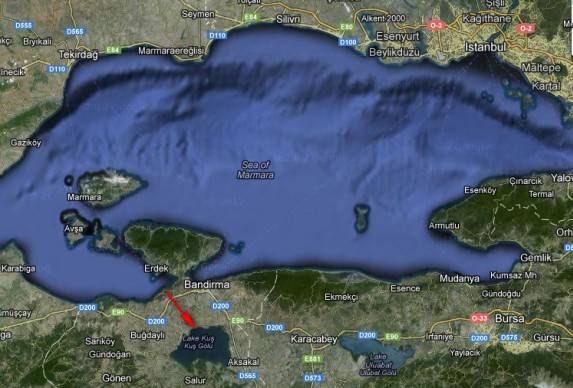
Kush Lake
In the Turkish army, Ignat Cossacks often served as scouts. They were also usually entrusted with guarding the banner of the Sultan and his treasury.
Following the "Precepts" of Ignat Nekrasov, the descendants of the Cossacks of the Maynos community retained faith, language, customs, traditions and clothing. Among these "Testaments" were the following:
“Ataman is elected for a year. If he is guilty, he is shifted ahead of schedule ”(5) and“ Atamanism can last only three terms - the government spoils a person ”(43).
“All earnings must be handed over to the army treasury. From it everyone receives 2/3 of the money earned, 1/3 goes to kosh ”(7).
“For robbery, robbery, murder - by decision of the circle, death” (12).
“Shinks and taverns should not be kept in the village” (14).
“Hold, keep the word. Cossacks and children must be old-fashioned ”(16).
“A Cossack does not hire a Cossack. He doesn’t receive money from his brother’s hands ”(17).
“There shall be no beggars in the village” (22).
“All Cossacks adhere to the true Orthodox old faith” (23).
“For the betrayal of a husband, 100 lashes are beaten to him” (30).
“For a wife’s treason, bury her neck in the ground” (31).
“If a son or daughter raised a hand to their parents - death. For resentment to the elder - whip ”(36).
“He who does not fulfill the precepts of Ignat will perish” (40).
Perplexity is caused by the 37th "Testament", which reads:
It is not entirely clear how he agrees with the data on the participation of Nekrasovites in the campaigns of the Krymchaks and Turks directed against Russia. Probably, this "Testament" is only attributed to Nekrasov and appeared much later than the rest when the Nekrasovites began to think about returning their ancestors to their homeland.
Nekrasovtsy and Transdanubian Sich
In June 1775, by order of Catherine II, the last (eighth in a row) Pidpilnian Sich was liquidated. The Cossacks, as you know, then divided into two parts. Most of the Cossacks in 1787 became part of the new Cossack army - the Black Sea. In 1792 he was granted lands from the right bank of the Kuban to the Yeisk town. On this occasion, the military judge of the Black Sea Cossack Army Anton Andreevich Golovaty wrote a famous song, the text of which can be read on the pedestal of the monument in Taman:
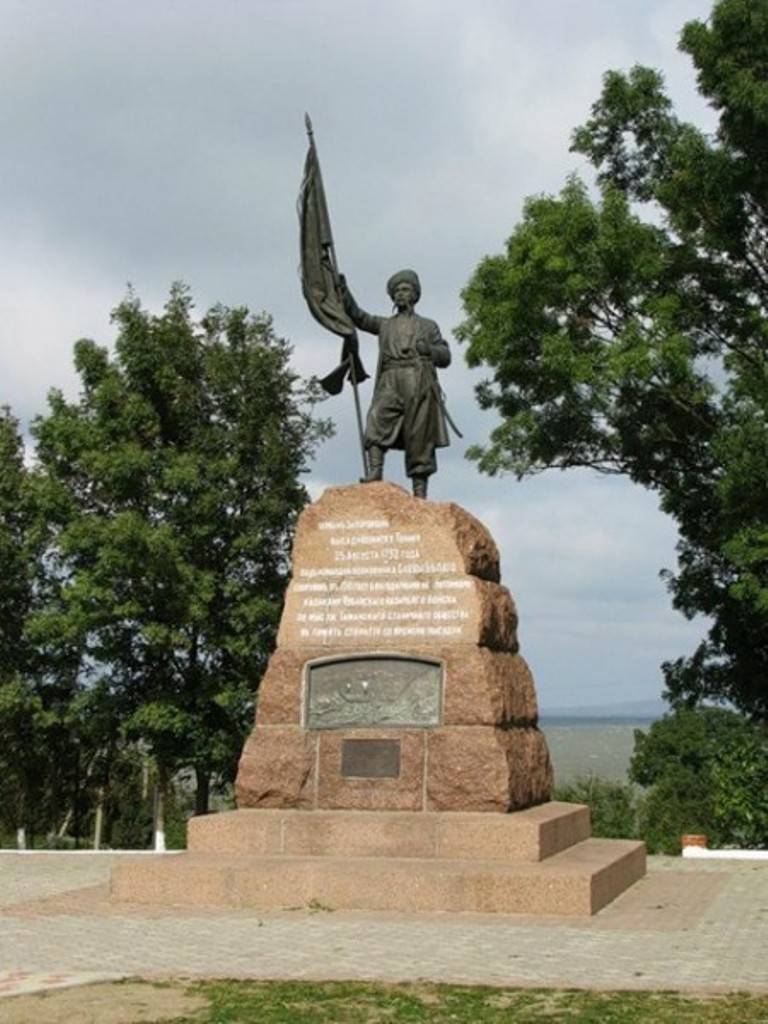
Monument to A. Golovaty in Taman, opened on October 5, 1911 on the eve of the 200th anniversary of the formation of the Kuban Cossack Army
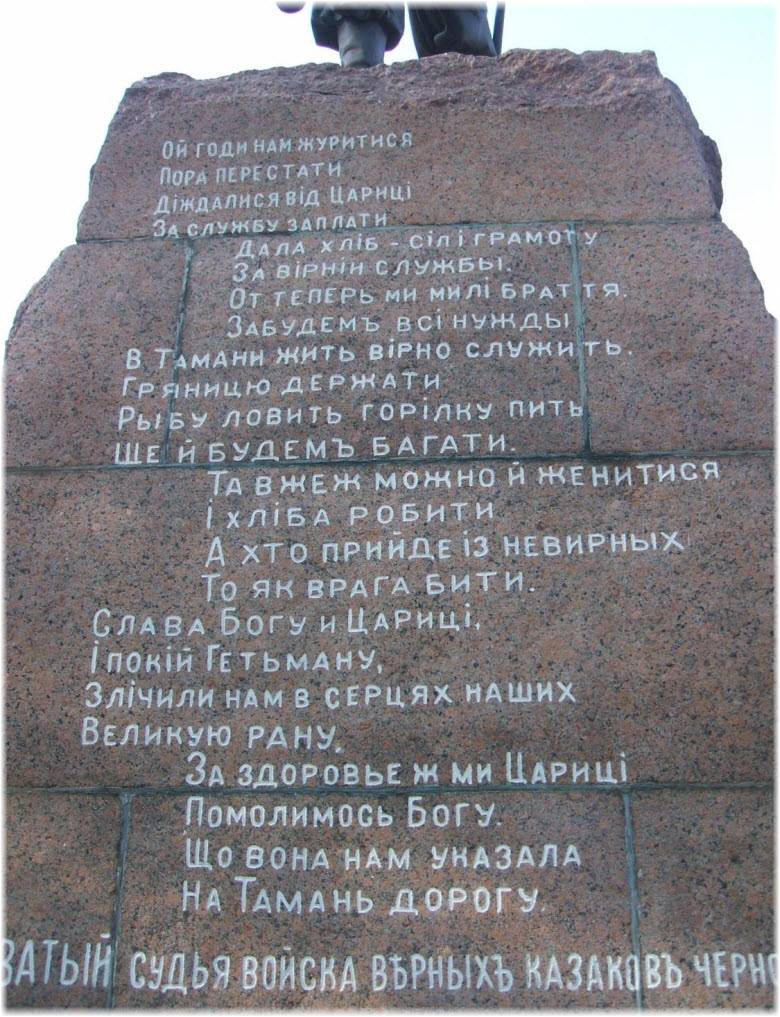
Monument to A. Golovaty in Taman, an inscription on a pedestal
Lyrics by A. Golovaty:
It’s time, by the way.
Waited from the Tsaritsa
Pay for the service.
Gave Bread, Strength and Literacy
For the service,
From now mi, dear brother,
Forget all the need.
To live in Tamanі, to serve virno,
The border of the grip
To catch a robe, drink a drink,
We’ll be buggies.
Yes, you need to get married,
I hliba robiti,
Hto come to us from nevirnykh
That, like an enemy, beat.
Glory be to God the Queen,
I rest to the hetman!
They told us in our hearts
Great wound.
Thanks to Emperatritsa,
Praying to God
Scho pointed us
To Taman road.
But some of the Cossacks, of those who were organically incapable of peaceful labor, went to the territory of the Ottoman Empire, establishing the Trans-Danube Sich. The Nekrasovites, who until then got along well with Muslims and people of other nationalities, were extremely unfriendly to their fellow Cossacks, who were close to them in language and blood, who answered them “in return.” Probably, on the part of the Nekrasovites, this was a manifestation of the primordial hostile distrust of the strong masters towards the inconspicuous "people walking": "To earn good only by labor. A true Cossack loves his work, ”says the 11th“ testament ”of Ignat Nekrasov. And from the side of the Cossacks there was no less traditional contempt of “thieves” for “peasants”.
The Nekrasovites and Cossacks clung tightly, almost to death: in regular skirmishes, both of them sometimes crucified opponents and did not even spare women and children. As a result, some “Danube Nekrasovites” were forced to move to a Asia Minor colony near Lake Mainos. But the Cossacks Nekrasovites pressed very much. This confrontation continued until 1828, when during the next Russian-Turkish war, most of the Cossacks returned to Russia, the rest were resettled in Edirne.
Return to Russia
Nekrasovites began to return to Russia only at the beginning of the 1911th century. The first of them left to avoid military service in the Turkish army in 1918. They were settled in Georgia, but the persecution to which they were subjected from the Menshevik government of this country in XNUMX forced them to move to the Kuban - to the village of Prochnokokopskaya.
In 1962, 215 families of Nekrasovites (about a thousand people) from the village of Koja-Gol (Mainos) returned from here to the USSR. They were settled in the Levokumsky district of the Stavropol Territory.
224 Nekrasovites in 1963 emigrated to the United States.
A little more than 100 descendants of the Nekrasovites remained in Turkey, their children do not already know the Russian language, and only some of the items that they inherited from their grandfathers and great-grandfathers recall that their ancestors once lived in Russia.
And the descendants of the Nekrasovites who found themselves on the territory of Romania are now part of the Lipovan community - Old Believers who moved there after the persecution of them began under the patriarch Nikon.
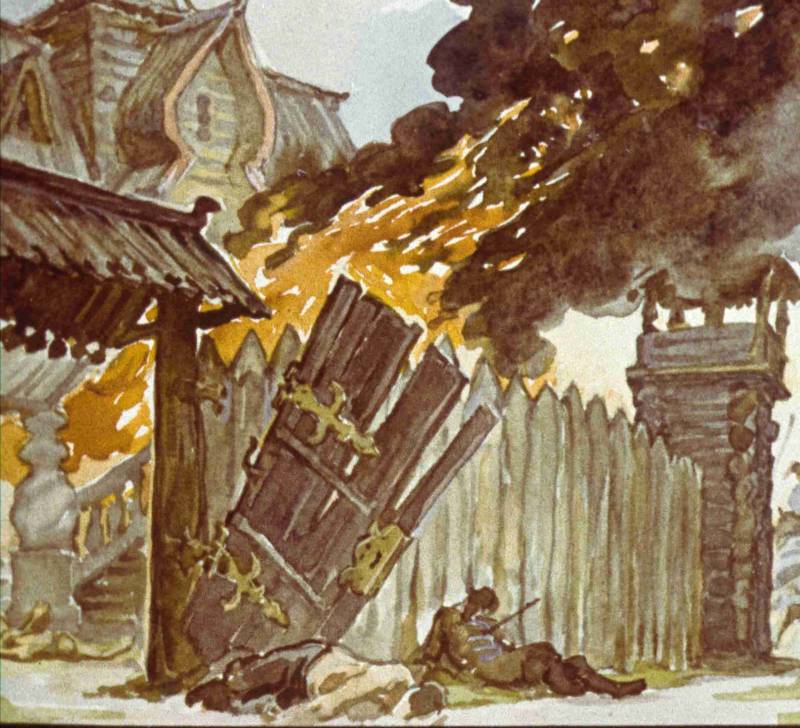
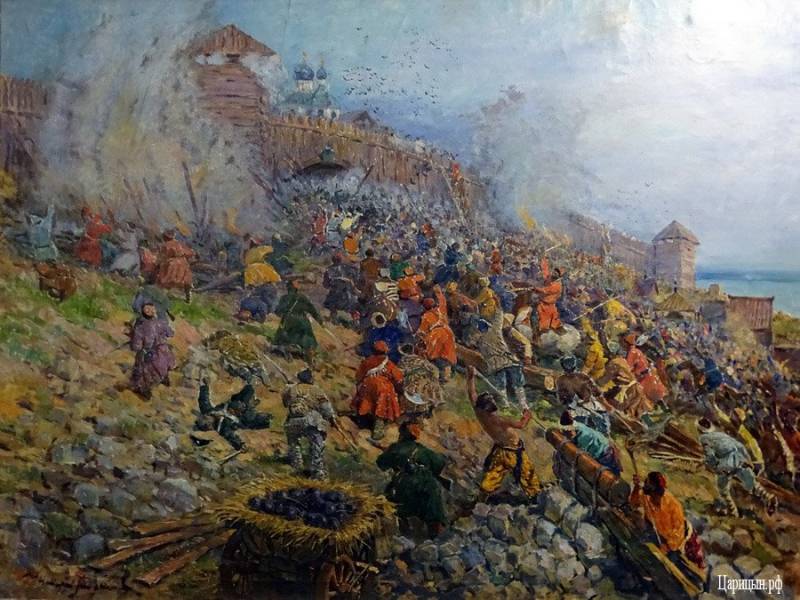
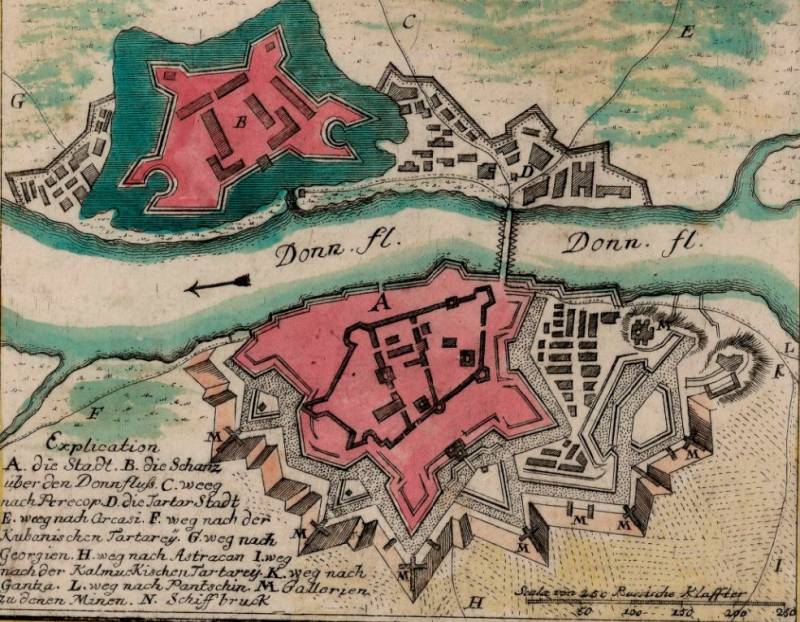
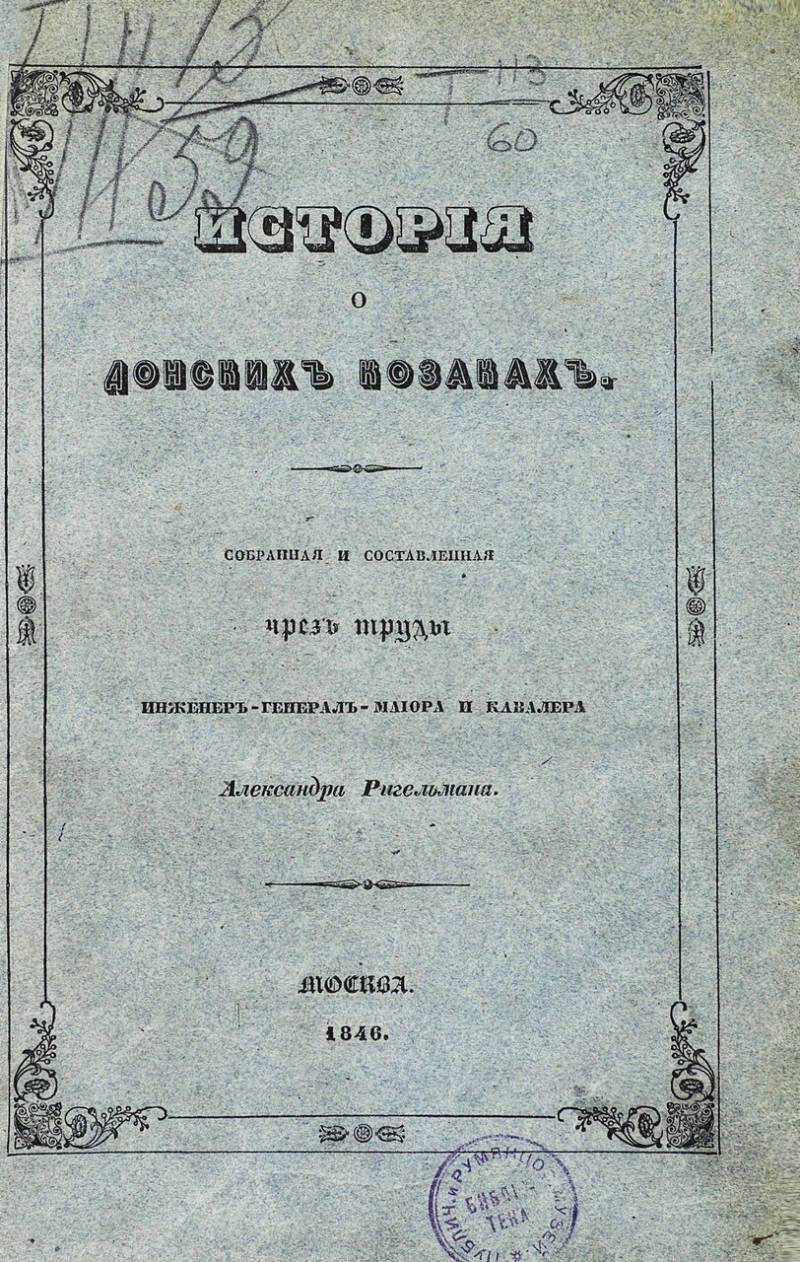
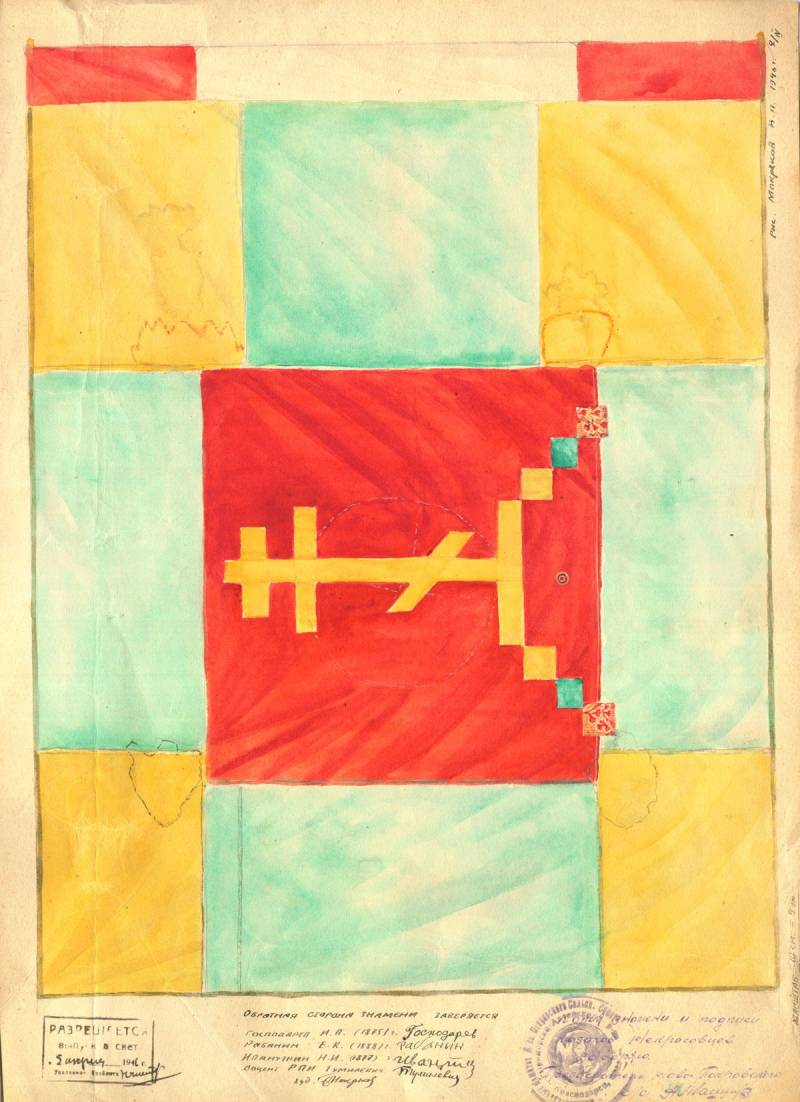
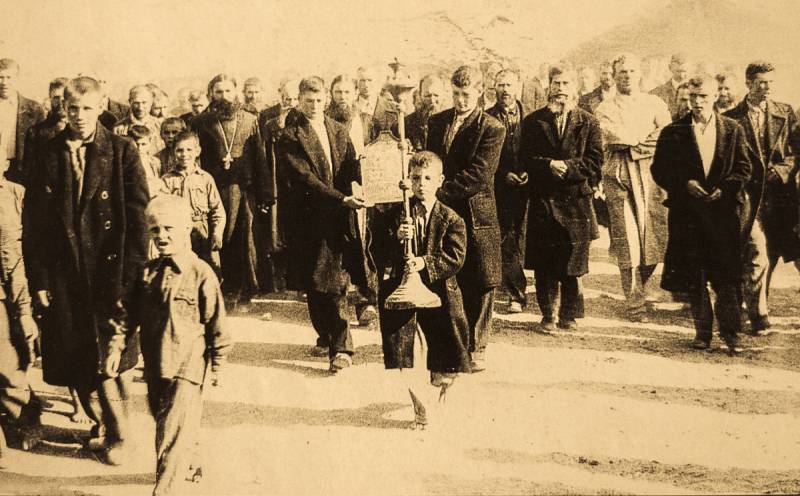
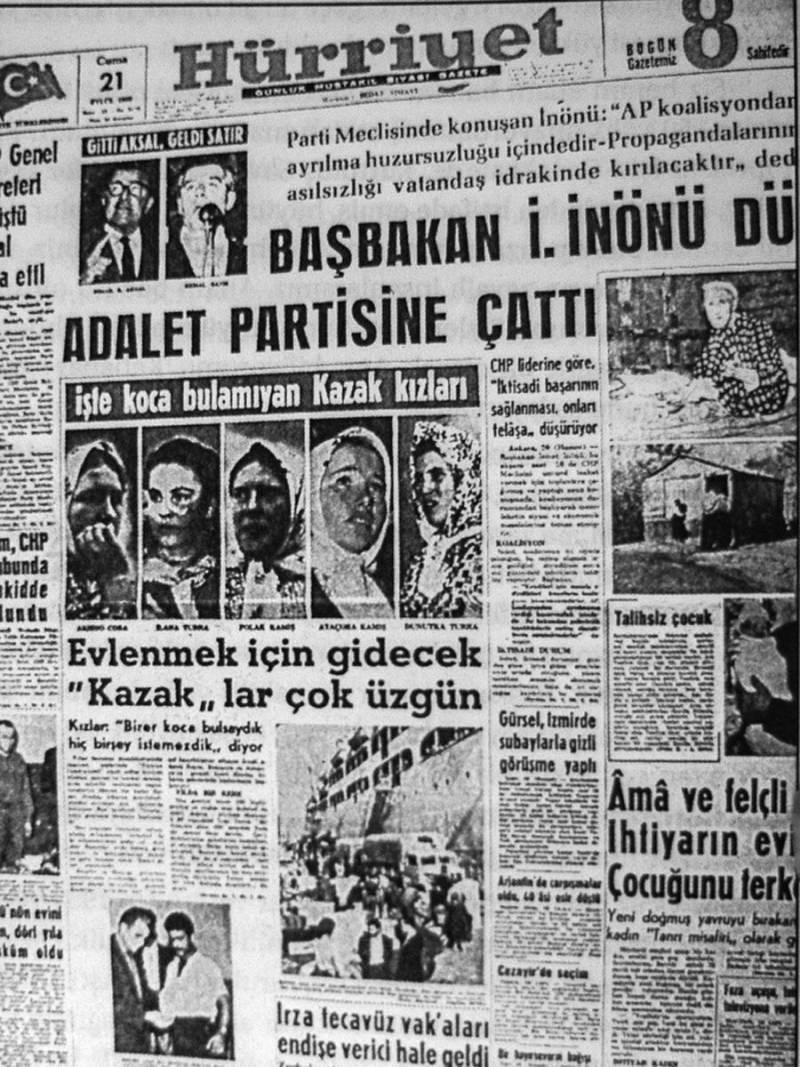
Information